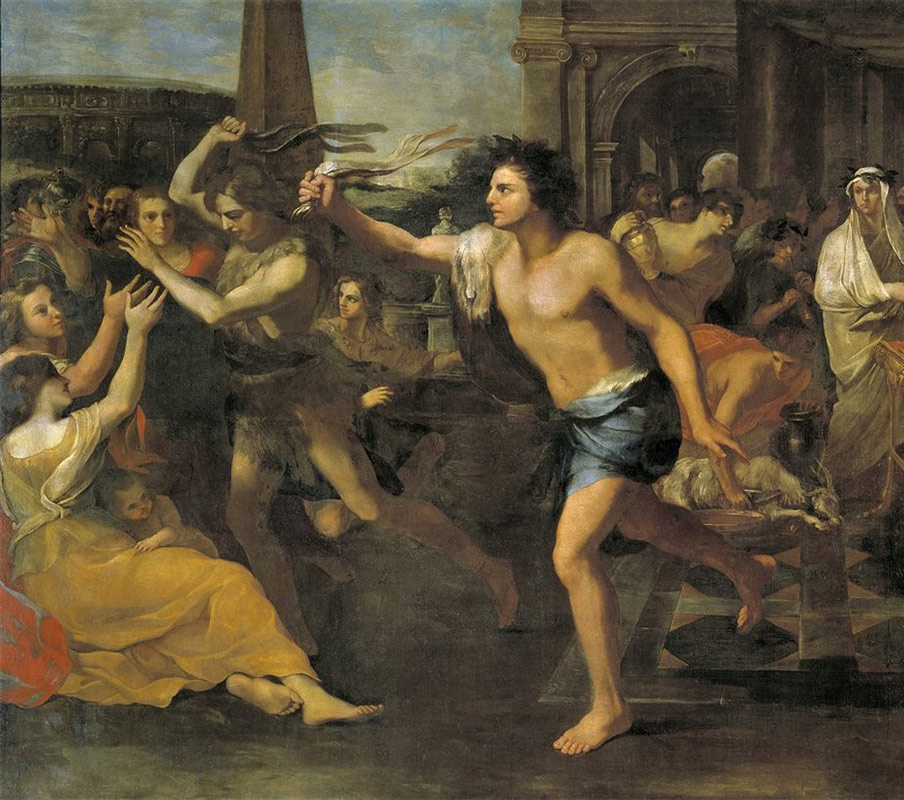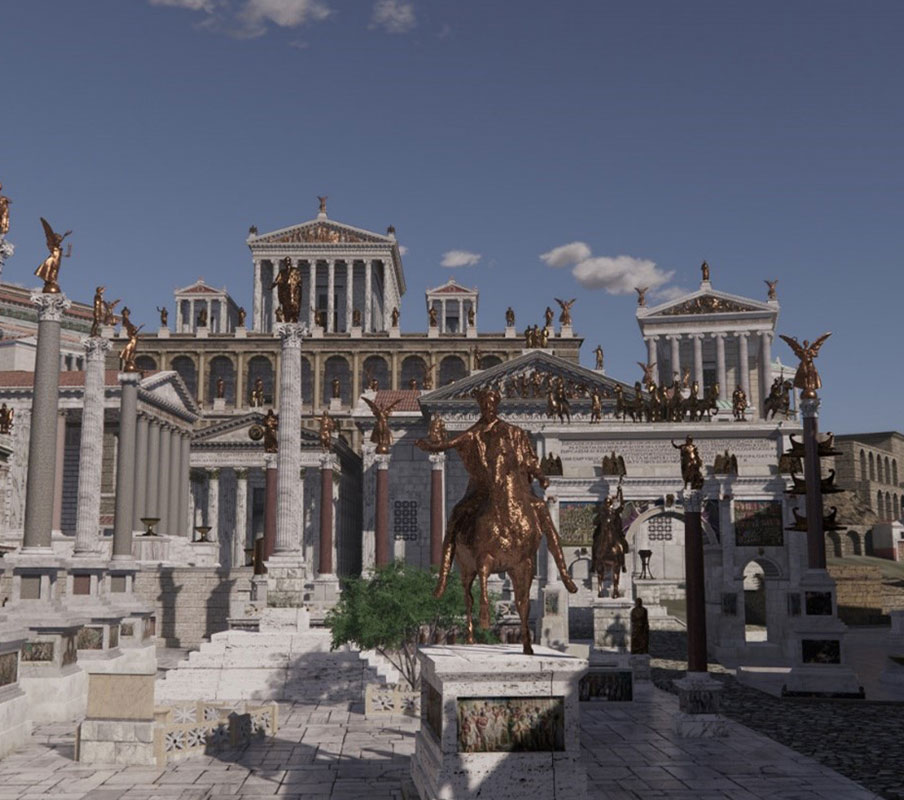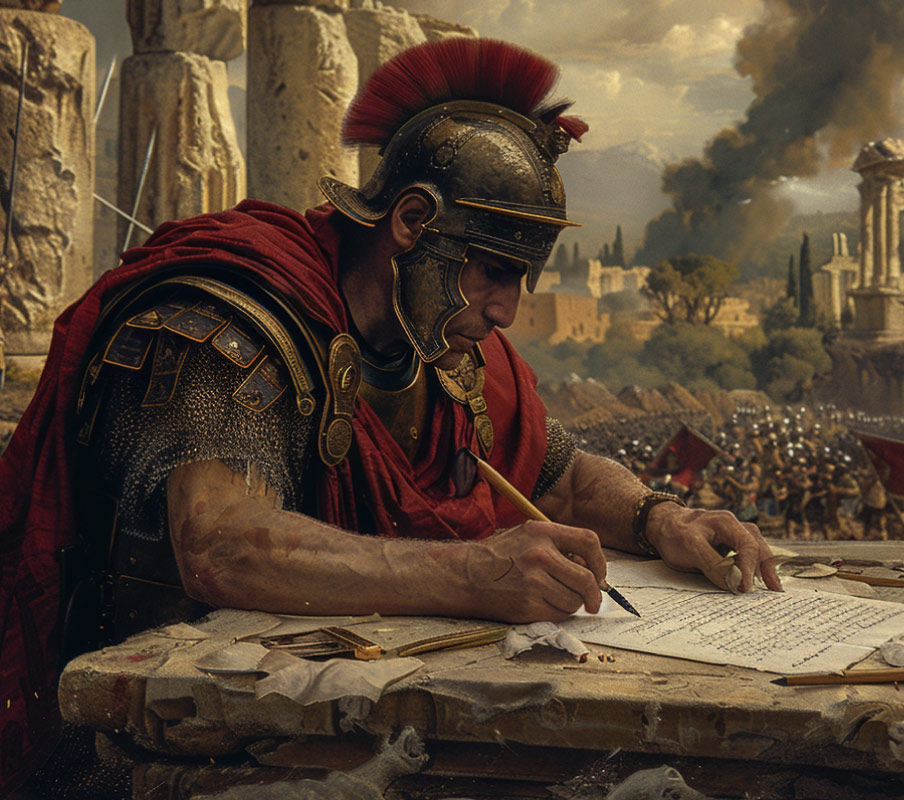
Who Were the Pagans?
The origin of the Roman religion
Roman traditional religion was polytheistic, involving hundreds of gods, goddesses, and minor deities. These divinities were associated with the sky, similar to the beliefs of other Indo-European cultures such as the Greeks, Gauls, and Germans. There were also a few divine entities associated with the underground, remnants of older Mediterranean cults.
From the start, Roman religion was a blend of elements from various cultures, primarily Italian. The Etruscans had a significant influence on shaping Roman religious practices, with many rituals and methods of divination originating from Etruscan traditions. For example, when Roman magistrates needed to seek the will of the gods they would consult priests trained in analyzing the flight patterns of birds or examining the entrails of sacrificed animals, both of which were of Etruscan origin.
Interactions with the Greek world also impacted Roman religion, as traditional deities became more closely associated with their Greek counterparts. However, the Roman religion was not a copy of the Greek one; Romans sought similarities with other religions as was common among polytheistic cultures. Furthermore, Romans had a unique practice for assimilating foreign deities known as evocatio.
More the gods, more the prosperity
Evocatio, meaning “summoning away”, consisted in inviting the gods of the enemy to join the Roman side. In return, these gods were granted a temple in Rome and revered with great honors. The evocatio was employed during wars, but under the empire, it also served to officially integrate the gods from new provinces into the Roman pantheon.
The Roman mindset always sought to integrate potentially threatening elements, rather than eliminating them, by adapting them to Roman culture and placing them under state control. Even if sometimes it didn’t work as well as usual – such as with Christianity.
A state religion
The Roman religion was quite different from what we usually think of as a religion. It had very little to do with faith and morality and a lot with social practices. Indeed, religio in Latin means « ritual ». Roman religion mainly consisted of a set of ceremonies and rituals aimed at ensuring the safety, peace, and prosperity of the Roman state.
Religion and politics were closely linked. There was not even a distinct class of priests, since those who practiced public rituals were in general magistrates. Indeed, one of the primary responsibilities of the government was to ensure the favor of the gods through specific and repeated rituals. The connection was not between the god and the individual but between the gods (or god) and the community.
This way, every state-related event was seen as being influenced by the will of the gods, for better or for worse. When the Roman army won it meant that the gods were satisfied and supported Rome; when a military clash or a plague happened, the magistrates had to understand why the gods were angry – and how to appease them (usually through extraordinary sacrifices of animals and ceremonies). In The Legend of Valentine , the belief that the emperor must ensure the prosperity of the empire by taking care of religious affairs greatly influences the events that affect Valentine and the other characters.
Main Roman Gods and Goddesses
As a polytheistic religion, Roman worship encompassed many gods and goddesses, whose roles and attributes could evolve. Not only did the characteristics of these deities shift over time, but some faded from worship while new ones were introduced into the Roman pantheon. The sheer number of divinities, from major gods to minor deities like nymphs and “genius” spirits, was nearly countless. Each deity had specific attributes and protected a particular aspect of human life or a natural element. Here are some examples.
- Jupiter: the king of the gods and ruler of the sky. Along with Juno and Minerva, he formed the Capitoline Triad, embodiment of the Roman greatness. The main temple was on the Capitoline Hill in Rome, the “Temple of Jupiter Best and Greatest on the Capitoline”, where Juno and Minerva were worshipped too.
- Juno: Jupiter’s sister and wife, the queen of the gods and the most important female deity. Initially the protector of marriage, she later extended her protection to the entire state.
- Mars: the god of war, with a connection to agriculture too. Mars held a central role in the Roman religion, and as a testament to this, Romulus and Remus, the mythical founders of Rome, were considered his sons.
- Minerva: Jupiter’s daughter, the goddess of arts and science. Unlike the Greek counterpart Artemis, she wasn’t a warrior deity, but rather a political one, in charge of the protection of the state alongside Jupiter and Juno.
- Venus: goddess of love. Venus holds great significance in the Roman pantheon, as legends have it that she is the mother of Aeneas, the hero tasked by the gods to found Rome. The gens Julia, the family of Julius Caesar, claimed descent from Aeneas’s son Julo/Ascanius, meaning they traced their lineage back to the goddess Venus.
Besides the Roman deities, new gods from the East gained popularity during the empire.
- Isis: originally an Egyptian goddess, in the Greek-Roman world she’s revered as a caring and compassionate deity who protects women and marriage.
- Mithra: an Indo-Iranian divinity, Mithra was worshipped as a Sun god and gained widespread popularity among soldiers in the 2nd and 3rd centuries AD. At one point, Mithraism was so prevalent that it rivalled Christianity as the most successful alternative religion to the traditional one.
The decline of the traditional religion
The Roman religion was meant to provide safety to the state but didn’t offer solace to the people. When Romans faced pain, troubles or doubts, they couldn’t find comfort in the traditional gods, as they were considered detached and uncaring about the lives of individuals. The meaning of life had to be researched in philosophy, not religion.
However, by the 3rd century AD, philosophy alone was no longer enough. Only the elite had access to it, and more and more people felt scared and lost as their world seemed under attack. They needed explanations and hope to carry on with their lives. That’s how new cults such as Mithraism and Christianity began to spread.
Christianity grew so much that emperors and the political elite started to perceive it as a threat to the state. Persecutions began against those who refused to sacrifice to the traditional gods, and later targeted the Church as a whole, killing its leaders and confiscating its property. Something that the characters in the The Legend of Valentine find out for themselves.
Despite these efforts, the persecution failed. Christianity proved resilient enough to withstand the trials of the 3rd and early 4th centuries, continuing to expand until it became the dominant religion in the empire. By 380 AD, with the Edict of Theodosius, Christianity was declared the only officially sanctioned faith, while the traditional Roman religion was outlawed.
What does it mean « pagan »?
Ancient Romans didn’t call themselves « pagan ». They didn’t even have a word to define their faith, as it was more of a set of social practices centered around their community. In ancient sources, the term Romana religio, « Roman religion », is used, and no terms identified their believers, who were simply known as « Romans ».
So, how did the term “pagan” come about? Pagan comes from the Latin word pagus, « village ». Literally, pagans are the people who live in small villages. Indeed, the word “pagan” began to be used by Christians in the 4th and 5th centuries AD, when Christianity had become the majority religion and polytheistic worship was largely confined to remote areas where the influence of the empire was weaker.
In The Legend of Valentine, to avoid anachronisms in the dialogues, the term “pagan” is never used. Instead, expressions like “traditional religion” are preferred. However, the term “pagan” is maintained in the narrative to provide clarity for readers and ensure they understand the reference.
Similar Posts
Let’s Start The Adventure
SUBSCRIBE TO MY NEWSLETTER AND RECEIVE EXCLUSIVE UPDATES ON MY LATEST WORKS



